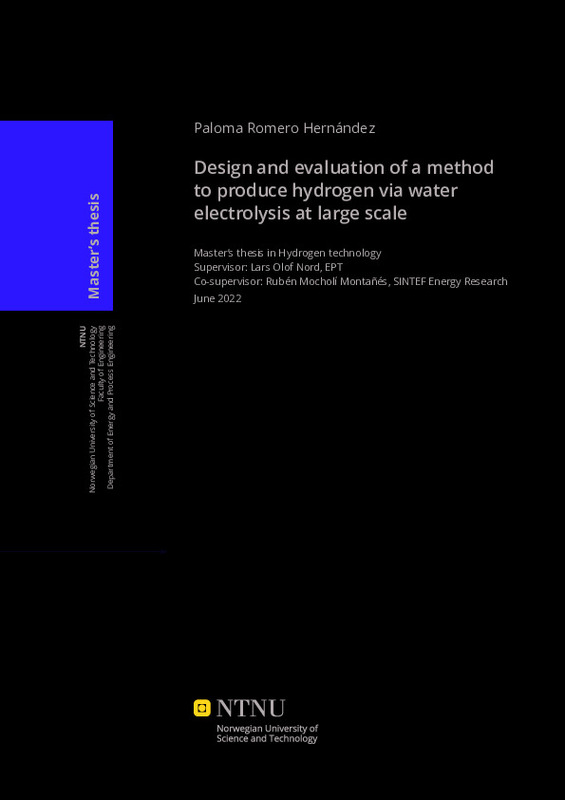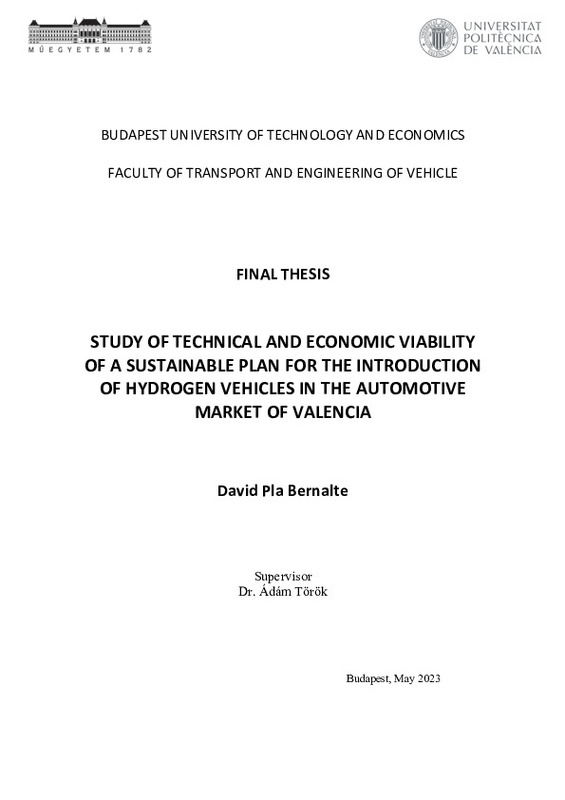|
Resumen:
|
[ES] El sistema energético actual basado en combustibles fósiles y su consecuente calentamiento global y cambio climático han creado la necesidad de una total descarbonización del sistema. El objetivo de este proceso es ...[+]
[ES] El sistema energético actual basado en combustibles fósiles y su consecuente calentamiento global y cambio climático han creado la necesidad de una total descarbonización del sistema. El objetivo de este proceso es reducir las emisiones de gases de efecto invernadero reemplazando los sistemas dependientes de combustibles fósiles con formas de energía con bajo contenido en carbono, enfocándose en la electrificación, la descarbonización y la mejora de la eficiencia energética. El uso del hidrógeno como vector energético tiene una contribución vital en este objetivo, facilitando no solo la descarbonización de sectores difíciles de electrificar como transporte, edificios e industria, sino también la integración de fuentes de energía renovables en el sistema energético. Existe un amplio rango de métodos de producción de hidrógeno, usando diferentes recursos energéticos tanto renovables como no renovables y métodos tanto químicos como físicos. Las tecnologías consideradas en este proyecto y sus respectivos recursos son: I. Reformado con vapor de agua (natural gas y biogas) II. Gasificación (carbón) III. Electrolisis (eólica y solar) IV. Gasificación y pirólisis (biomasa) V. Ciclos termo-químicos (solar y nuclear) VI. Fotocatálisis (solar) VII. Fermentación oscura (biomasa) Este proyecto analiza estos métodos comparando su grado de madurez, investigación y desarrollo, los aspectos ambientales como cambio climático y potencial de acidificación, los costes de producción y la eficiencia energética. En segundo lugar, el hidrógeno tiene un potencial prometedor para almacenar energía a gran escala, concepto muy importante debido al porcentaje de energía renovable en aumento en el sistema. Los siguientes métodos de almacenamiento del hidrógeno son estudiados: o Gas comprimido o Líquido o Basado en materiales o Bajo el suelo o Tuberías Estos métodos son comparados en base a su densidad de almacenamiento, costes, aspectos ambientales y seguridad. Las ventajas y desventajas de cada método son comparadas a la vez que las futuras tendencias y retos tanto en las tecnologías de producción como almacenamiento. En tercer lugar, los métodos de distribución y los usos del hidrógeno son analizados, enfocándose en el papel del hidrógeno en la descarbonización de transporte, edificios e industria. En esta parte se analizan también los problemas y retos relativos al transporte de hidrógeno, el potencial de uso del almacenamiento bajo suelo de hidrógeno para la integración de renovables en la red y la inyección de hidrógeno en la actual red de gas natural con sus limitaciones y riesgos. Por último, se discute el potencial del hidrógeno para apoyar los objetivos de la transición energética de Alemania, como el incremento de energía renovable en el consumo energético hasta un 18% en 2020 y un 60% en 2050, y la reducción de las emisiones de gases de efecto invernadero hasta un 80-95% en 2050, y la manera de conseguir cumplir estos objetivos.
[-]
[EN] The current energy system based on fossil fuels and its consecutive global warming and climate change has created the demand of a total decarbonization of the system. The aim of this process is to reduce greenhouse ...[+]
[EN] The current energy system based on fossil fuels and its consecutive global warming and climate change has created the demand of a total decarbonization of the system. The aim of this process is to reduce greenhouse gas emissions by replacing fossil fuels reliant systems with low-carbon sources of energy, focusing on electrification, decarbonization of electricity and improvement of energy efficiency. The use of hydrogen as an energy carrier makes a vital contribution in this objective facilitating not only the decarbonization of hard-to-electrify sectors like mobility, building and industry but also the integration of variable renewable energy sources in the energy system. There is a wide range of hydrogen production technologies using different resources -renewable and non-renewable- and chemical and physical methods. The main technologies considered in this project and their respective sources are:
I. Steam reforming (natural gas and biogas)
II. Gasification (coal)
III. Electrolysis (wind and solar)
IV. Gasification and pyrolysis (biomass)
V. Thermochemical water splitting (solar and nuclear)
VI. Photocatalysis (solar)
VII. Dark fermentation (biomass)
This project will analyse the previous methods by comparing the maturity and latest research of each technology, the environmental aspects such as global warming and acidification potentials, the production costs and the energy efficiencies. Furthermore, hydrogen has a promising potential for large-scale energy storage, which is a very important issue because of the rising share of variable renewable energy in the system. The following hydrogen storage methods are reviewed:
o Compressed gas storage
o Liquid storage
o Material-based storage
o Underground storage
o Pipeline storage
These methods are compared based on storage density, costs, environmental aspects and safety. The advantages and disadvantages of each method are compared. In addition, future trends and significant challenges of both production and storage technologies are studied.
Afterwards, the delivery method and uses of hydrogen are analysed, focusing mainly on the hydrogen¿s role to decarbonise transport, building and industry. In this part the project analyses the problems and challenges related to hydrogen transportation and pipelines, the potential of the use of underground storage of hydrogen for the grid integration of renewable energy and the hydrogen injection to the natural gas grid taking a good look at the potential, limitations and difficulties of these issues. Lastly, the project discusses the potential that hydrogen has for supporting the German Energiewende goals, such as the increase in the share of renewable energy in final energy consumption to 18% by 2020 and to 60% by 2050, and the way to achieve these targets.
[-]
|




![[Cerrado]](/themes/UPV/images/candado.png)





